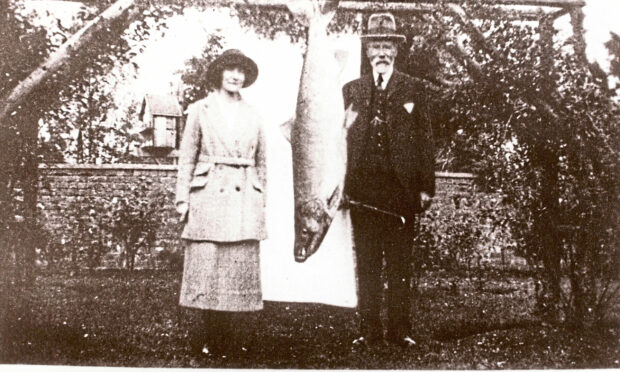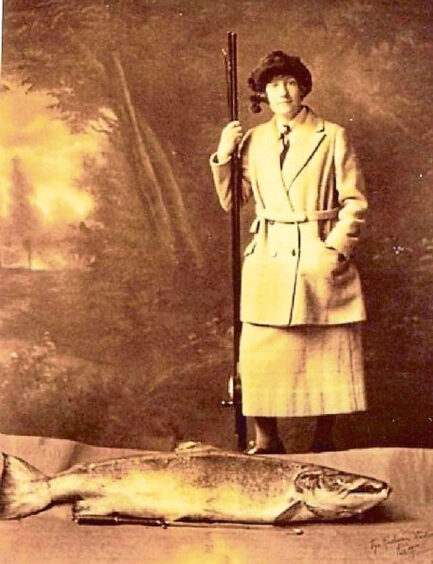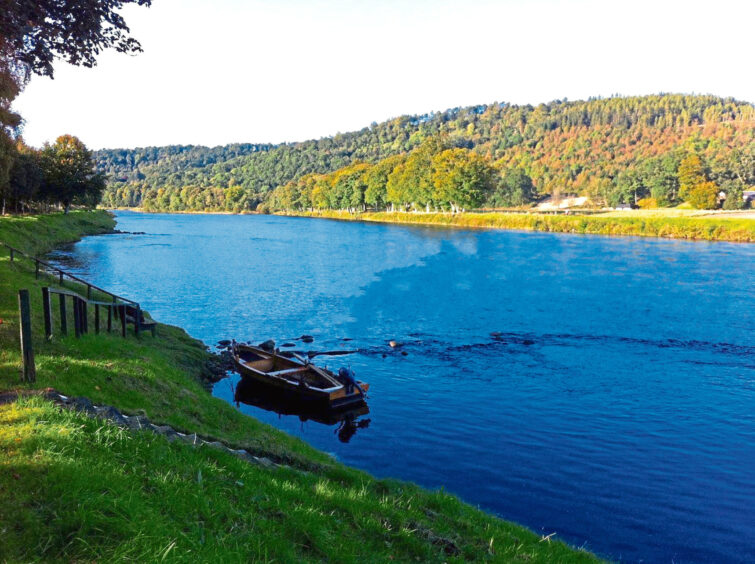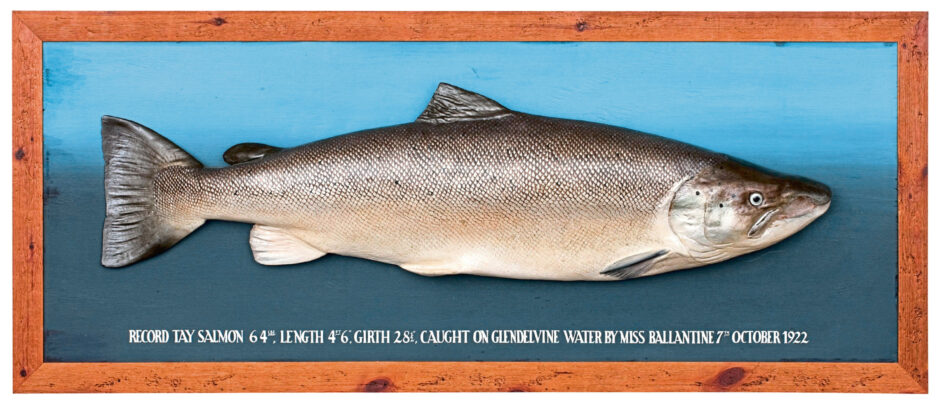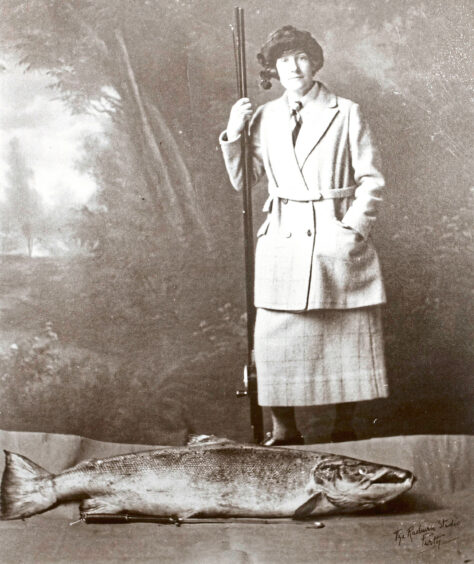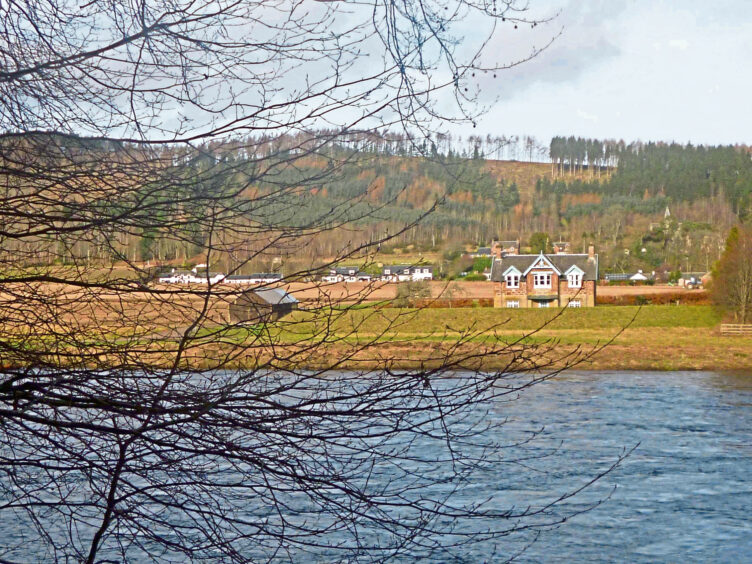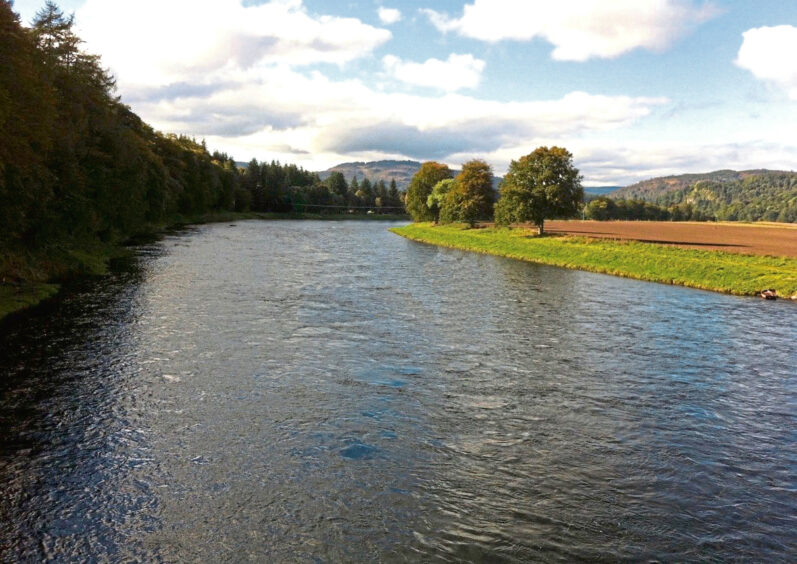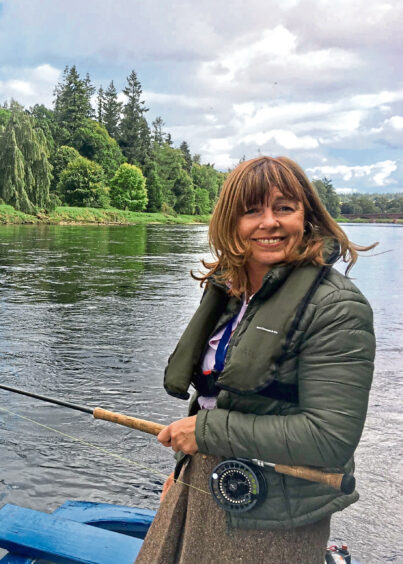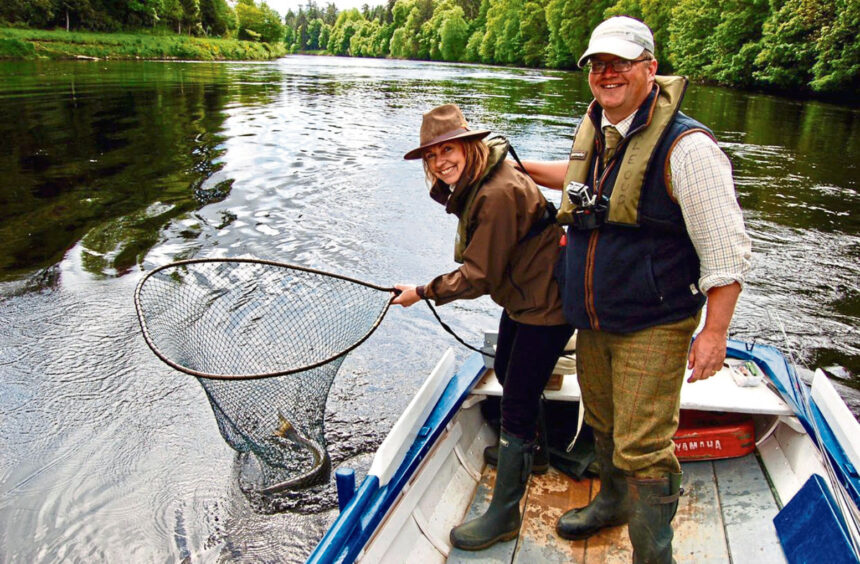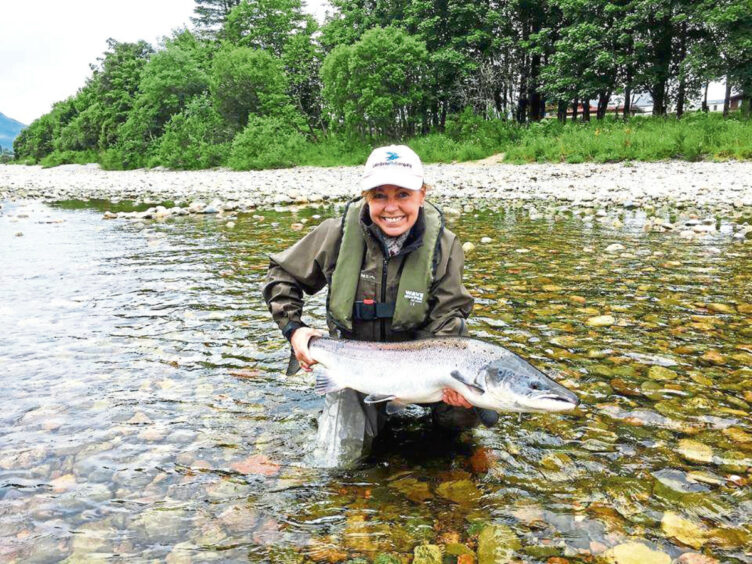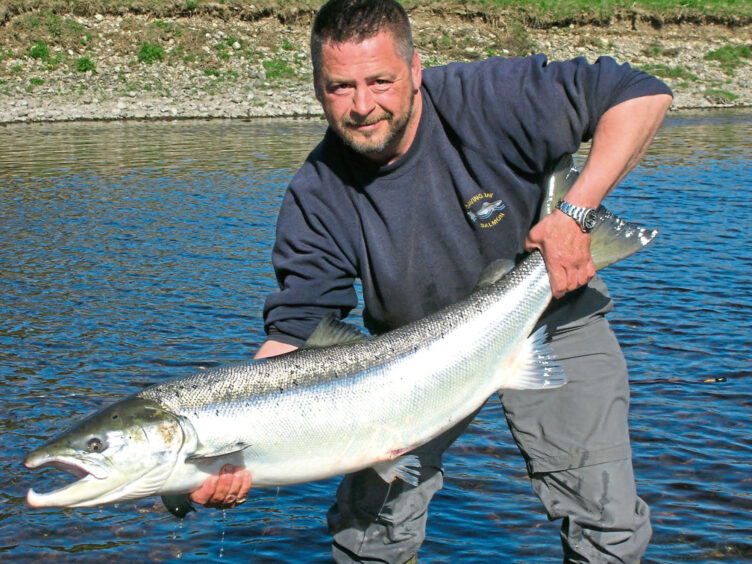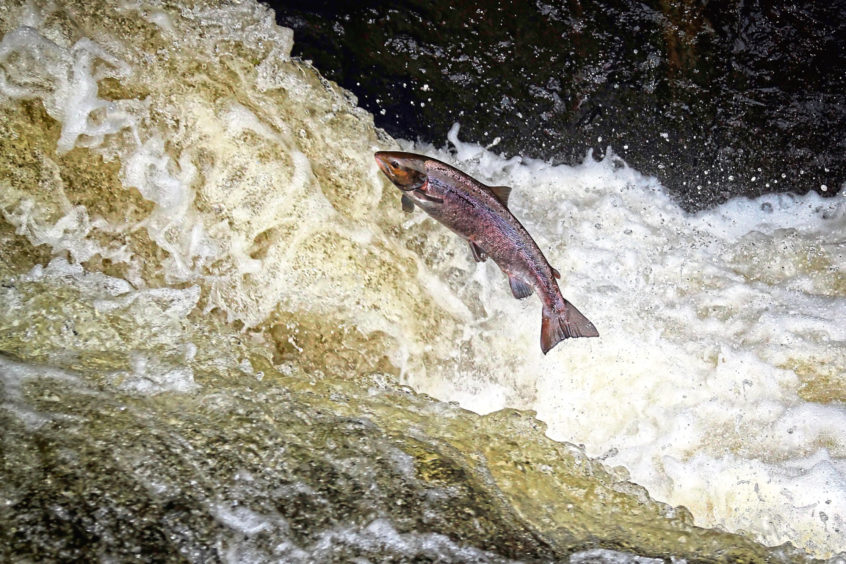Georgina Ballantine’s 64lb salmon remains the largest recorded from a British river with rod and line. Gayle Ritchie looks at the significance of the historic two-hour tussle’ on the Tay 100 years on.
As the last rays of sun shone down on the Tay, there was a tremendous tug upon Georgina Ballantine’s fishing line.
She had hooked an enormous salmon, although the 32-year-old nurse had no idea just how big he was and that she would have to endure a two-hour struggle to secure him.
At 6.15pm on October 7 1922, Georgina began what she later described as a “Homeric battle”.
“He was hooked well out in the stream above the Bargie Stone, and after a few minutes of very ordinary play, we decided to land him… on the Murthly side, the slack water there being an advantage,” she wrote.
“But the fish’s plan and ours did not coincide. Whir-r-r! An alarming amount of the line was torn off, the reel screeched as it had never screeched before, the fish careered madly downstream, leaving only a whirl of spray in its train.”
Eventually, under cover of darkness, and after severing a finger in the process, the “wriggling monster” was heaved into the boat alongside Georgina and her ghillie father, James.
It had been, in Georgina’s words: “Two hours and five minutes of nerve-wracking anxiety, thrilling excitement, and good stiff work.”
The 64lb salmon, caught at the Glendelvine beat near Caputh in Perthshire, proved to be the heaviest fish of the season – a record for the British Isles and one that remains unbeaten to this day.
Talented angler
It was a glorious, sunny, autumnal day when Georgina set out to go fishing with her father and Melvin the boatman, the laird being “indisposed” with a headache.
Before hooking the giant salmon with a Malloch rod, she had already caught three fish weighing 25, 17 and 11lbs.
She finally landed the 64lb beast above the island on the next-door Burnbane beat – half a mile downstream – at 8.20pm.
Father and daughter rowed back upstream to their cottage to be greeted by Georgina’s anxious mother, who said: “Guid sakes, I thoct ye were baith in the watter!” and handed them a “toddy”.
The following day the Perthshire Advertiser carried the headlines: “Monster Salmon Caught in the Tay”, and “Caputh Lady’s Tussle”.
However, Georgina only became aware of her outstanding feat when she visited PD Malloch’s fishing tackle shop in Perth a few days later.
A crowd had gathered in front of the store, all jostling to see her ‘monster’ fish displayed in the window.
Once a cast had been made of the salmon, it was cut up and served to patients and staff at Perth Royal Infirmary.
Georgina had served as a nurse during the First World War in Perth, then later in London and France, where she was decorated for her work with the Red Cross.
Throughout her life she had worked at hospitals up and down the country, so it was fitting that the salmon ended up as a tasty dish on the menu at PRI.
Famous female angler
Her catch was the talk of gentlemen’s clubs across Britain and made headlines around the world.
As the most famous female angler in Scotland, she attended dinners held in her honour.
In 1923 the tackle company Milwards presented her with their special Fly Brooch, which was quite the honour among anglers.
Photos were taken of her holding aloft the hefty salmon, a smile of triumph on her face, and a watercolour painting was made of the fish.
As it was hung in a gentlemen’s club, however, Georgina was barred from seeing it.
She wasn’t allowed to become a member of the men-only Fly Fishers Club, even though members displayed the painting of the fish and the cast at various times in their history.
However, her magnificent catch was said to have inspired thousands of women to take up the sport – and continues to do so today.
Her feat will likely never be repeated, as the chances of a salmon of this size existing today are, sadly, miniscule.
Georgina’s poor health
Even at the age of 32, Georgina suffered from arthritis in her hands, although she tried to hide this from the fishing fraternity.
The condition spread to her body and affected her legs so badly later in life that they had to be amputated, leaving her wheelchair-bound.
She never married but was much loved by locals who rallied around to look after her.
In 1955 they paid for her house to be wired, provided heating and lighting and a generator in the outhouse.
One man fitted her cottage with various gadgets including an alarm light on the roof. If she was in trouble, the light attracted help from the neighbours.
Georgina died in 1970 but she will never be forgotten.
100th anniversary
October 7 2022 marks the 100th anniversary of Georgina’s record-breaking catch.
Sir Gavin Lyle, a descendent of the golden syrup magnate Abram Lyle, owns Glendelvine and says her salmon plays a “huge part” in the history of the estate.
“We are very proud of Miss Georgina Ballantine’s incredible achievement and her close association with the Glendelvine beat of the magnificent River Tay,” he says.
“Georgina spent most of her life living at Victoria Cottage in Caputh, overlooking the pool where she hooked the fish, and was hugely popular with fishers from far and wide who came to visit her there.
“Georgina’s record salmon plays a huge part in the history of Glendelvine.
“It has been a much admired treasure for the Lyle family and countless others over the last 100 years and remains so today.”
The original fish, measuring 54 inches, was cast in plaster by PD Malloch’s and remains on the Glendelvine estate. It is owned by Sir Gavin.
Twelve replicas were cast in fibreglass by George Jamieson by taking a mould from the original plaster cast.
One of the dozen casts fetched a record £11,250 at auction in May 2017 when it went under the hammer at Bonhams’ Sporting Sale in Edinburgh, along with a reproduction photograph of Miss Ballantine with her prize catch and rod and certificate signed by Sir Gavin.
‘Women hold the record for huge salmon in the UK’
Anne Woodcock, spokeswoman for the Tay District Salmon Fisheries Board and Tay Rivers Trust, loves telling fishermen: “It’s women who hold the records in the UK for the biggest salmon – in a sport where many see it as male-dominated.”
She adds: “They also hold the record for the biggest on the fly and spring fish, and it was during the 1920s that these women caught these huge fish.
“Miss Ballantine’s fish for the largest salmon caught is now one of the longest surviving records in the UK.
“People ask: ‘Will the record be broken?’ I don’t think so!”
Two years after Georgina’s fish was caught, on October 21 1924, Clementina ‘Tiny’ Morison took a 61lb salmon at Mountblairy, Lower Shaws, on the banks of the River Deveron in Aberdeenshire.
And on March 13 1923, the heaviest spring fish – 59.5lbs – was caught by Doreen Davey from the River Wye in Herefordshire.
Evidently, the 1920s were a good time for big fish.
Miss Ballantine’s fish for the largest salmon caught is now one of the longest surviving records in the UK. People ask: ‘Will the record be broken?’ I don’t think so!”
Anne Woodcock
So is there a reason why so many women hold these records?
Some say that the biggest fish are male and male fish are attracted to the pheromones from female anglers.
But some female anglers argue this is a theory perpetuated by men to demean them when, actually, female anglers are just better…
That question aside, Anne is delighted that, 100 years on, Georgina Ballantine continues to inspire women.
“She was a working class woman who loved to fish and that’s refreshing – salmon fishing can be seen by some as the sport of ‘toffs’, especially in 1922,” she reflects.
“Georgina caught her first salmon at the age of just eight.
“She lived on the banks of the Tay overlooking the pool where she caught the 64lb fish.
“After her father passed she managed the Glendelvine syndicate, which fishes the stretch of water where the fish was caught, and 100 years later the fishing syndicate is still going strong.
“Her cottage is now a self-catering cottage and the garden has changed little since her death.”
Anne says while Georgina became a celebrity “overnight”, the Glendelvine beat became a Mecca for anglers across the globe, with many keen to meet her and try to hook a salmon themselves.
Her legacy lives on, with girls and women following in her footsteps and making the sport more accessible.
“Ultimately Georgina Ballantine was a wonderful and inspirational lady who is inspiring women to take up fishing in the 21st Century,” adds Anne.
“It’s great to see so many ladies taking up the sport and enjoying the physical and mental health benefits of casting a fly line.”
The rod, reel and line Georgina caught the fish on was PD Malloch of Perth, which closed a few years ago.
However, the name lives on with the Malloch Trophy presented annually for the largest salmon caught in Scotland on the fly and released.
This year’s winner – who caught a 29.5lb spring fish – will be presented with the trophy at a celebratory fundraising dinner on October 7.
Meanwhile, Loch Tay has recorded two fish over 30lbs this year, which are the biggest in Scotland. They were both caught on lures.
Ghillie on Glendelvine
Steve McIrvine has fished the beat where Georgina caught her fish since he was a young lad.
He’s been the head ghillie at Glendelvine Estate for 23 years and is one of a rare breed of true craftsmen operating on the Tay.
“I’ve been fishing here on a regular basis for 43 years and I’ve seen some big fish taken – a few over 30lb and one about 40lb in the 1970s – but nothing compared to Georgina’s,” he says.
“A lot of records for big salmon were made between the two wars, in the 20s. The fish just came back bigger.”
Steve describes every beat on the Tay as beautiful and unique but says Glendelvine is “good, fast-flowing fast” and on the whole “quite a shallow beat”, making it ideal to fish with a fly rod.
He laments the lack of salmon being caught these days, noting a severe dwindling in numbers over the last decade or so.
“The main problem is predation at the source of the river, whether cormorants or goosanders,” he said.
“And once juveniles, or smolts, get to the mouth of the river, there are thousands of seals waiting which just stuff their face with them – and you’re not allowed to shoot seals.
“There are very few fish coming back up the river now, and when people pay to fish, they want to catch a salmon, so it’s disappointing.”
How to catch a salmon
Salmon are never easy to catch and “springers”, which enter the river any time from January to May, are harder still.
As they make their way from the sea to the place they were born, they don’t feed, which is why catching them is such a skill.
No-one really knows for sure why salmon take a fly – made of feathers and other coloured bits and bobs, and “tied” to imitate a real insect or small fish – or a spinning bait (like a spinning top in the water), although some reason it’s done out of curiosity or aggression rather than hunger.
- A new display at Perth Museum and Art Gallery running from October 7 until the end of the year will celebrate the 100th anniversary of Georgina Ballantine landing the biggest ever rod-caught British salmon. It will feature the original fishing reel, gaff and hook used to capture the fish and the medals awarded to Georgina for her voluntary service with the British Red Cross as a nurse during the Second World War.
- A fundraising dinner to mark the 100th anniversary and to raise money for the Tay Rivers Trust to help the plight of Atlantic salmon takes place on October 7 at Murrayshall Country House Hotel in Scone.
- A wire sculpture of Georgina featured on a temporary art trail in Perth, which ran from July to September. It was one of 20 sculptures designed by artist Vanessa Lawrence, each one inspired by a female from Perth and Kinross. The list included athletes Eve Muirhead and Eilidh Doyle, as well as historic women including Kate McNiven, one of the last witches burned in Scotland.
